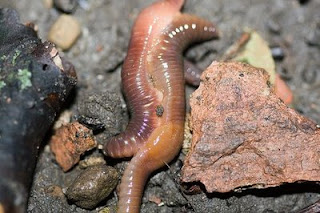It seems to be on Fridays we do all the fun things but I don't mind, last Friday we got to dissect squids! Its really enjoyable and helpful to have a visual in front of me whenever we learn new units on bio. Last time when we did the earthworm dissection I was "Dr. Marissa" but this time it was Liz doing all the work while I was answering the questions. I learned/saw things I wouldn't think I was gong to find in a squid such as the beak, all the small organs or that they both had tentacles and arms! Although taking pictures of the squids organs was hard to tell what was what because everything was smushed together even having a clear picture beside us was kind of a challenge to point things out. When we found the pen I wasn't quite sure what it was because it really looked like plastic until I touched it it, thinking it would be flimsy I found out it was firm. Knowing we could write with the pen hense the name with the ink sac was pretty cool even though it broke right away. I learned squids have three hearts and they move tail first instead of head first in water. Here are some pictures i took and facts that I learned! (:
Tuesday, December 11, 2012
Tuesday, December 4, 2012
Earthworm Dissection Questions
On Friday my bio class got to dissect annelids which is a round worm like animal that has a segmented body, such as an earthworm. When I was in elementary I had always wondered why earthworms came out on rainy days, always stopped to pick them up, feel their slimy bodies and see their reactions or how they moved around a lot in the hot sun because they were literally being fried. At first knowing that we had to cut from its mouth to its anus, got me feeling iffy about it because I'm not really into cutting flesh, I find it weird and disturbing. Cutting their little bodies up was a no-no for me, I wanted my partner Liz to do all the work but she was squirming around when I pushed the scalpel in or poked it, saying how I should be a doctor which would never happen. Anyways when we opened up the earthworm, it was hard to tell where things were because everything was covered up in the black watery ooze which was the soil, although some thought it was poop. We got to learn that they are hermaphrodites which I wouldn't have guessed, thinking the females look different than males like any other animal. That they have a mouth AND an anus, unlike Cnidarians they have one way of getting things in and out! There wasn't much to see, Liz and I were far from done with dissecting the worm plus my camera phone didn't take very good pictures so we ended up giving it to the group beside us to observe it because they had cut too deep. It was a good experience and a good time even though I wouldn't do it again, I would just observe from afar knowing we have more dissecting projects to come. Here are some pictures that I took of that I was not able to label and some that I had borrowed from the internet.
 |
| Which parts of the worm body that you saw included the excretory system?: My picture isn't very clear but this was the closest I could get from not having a blurry picture. |
Subscribe to:
Comments (Atom)










